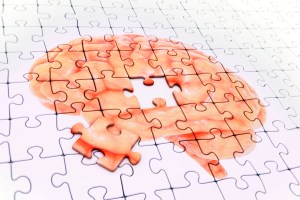Compound traces brain plaques in real time
Amyloid ligand may give clinicians needed tool to diagnose, monitor Alzheimer’s
Alzheimer’s disease is notoriously difficult to diagnose. Though sophisticated functional and cognitive tests can help, they often fail to distinguish between Alzheimer’s and other non-amyloid-based dementias, particularly frontotemporal dementia. The ability to measure plaques in vivo would not only provide clinicians with an immediate and reliable diagnosis, but over time would allow them to gauge how the disease is progressing. Positron emission tomography (PET) may be a window into the brain for neurologists. Harvard researchers have described how a compound, called Pittsburgh compound B (PIB), can be tracked by PET, a technique that may soon be used to diagnose and monitor Alzheimer’s disease in humans. The technique is described in the Sept. 29, 2003 online edition of Proceedings of the National Academy of Sciences by Assistant Professor of Neurology Brian Bacskai and the John B. Penney Jr. Professor of Neurology Bradley Hyman, both at Harvard Medical School and Massachusetts General Hospital.





